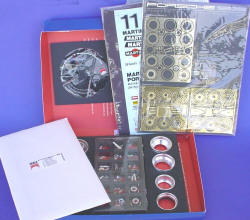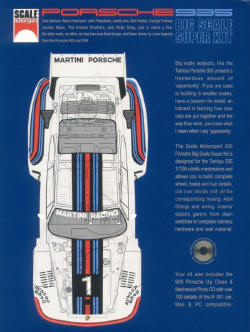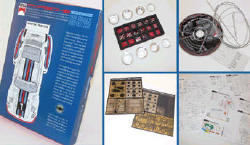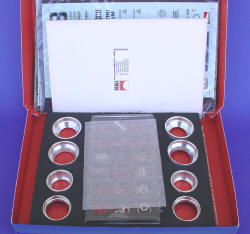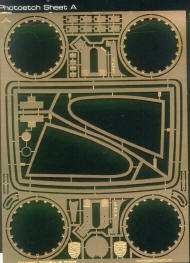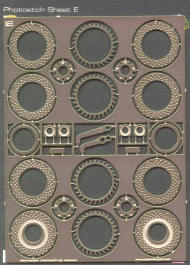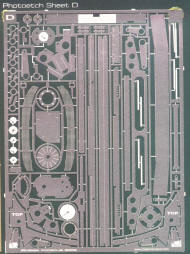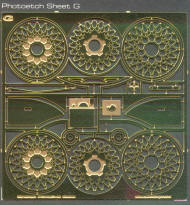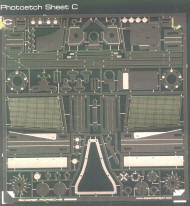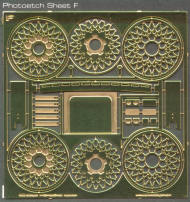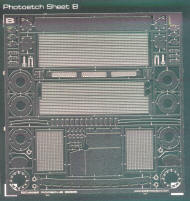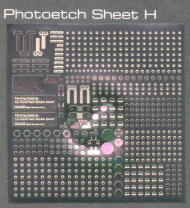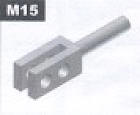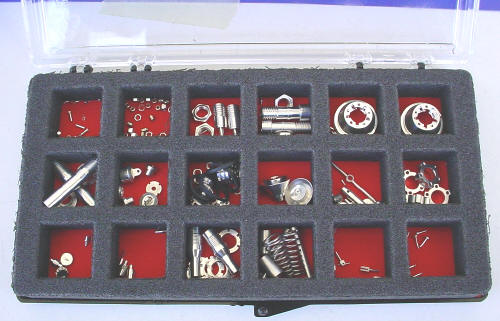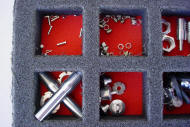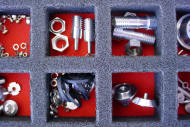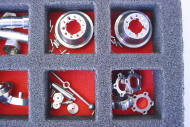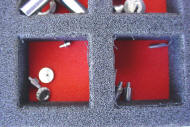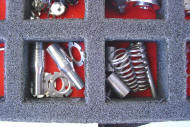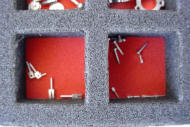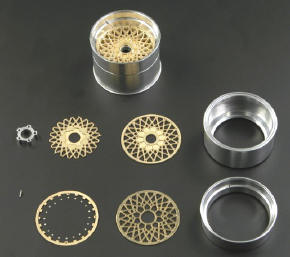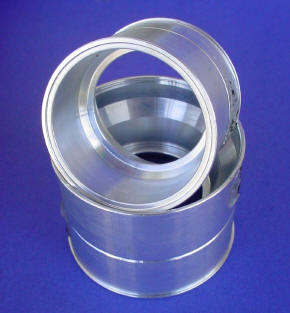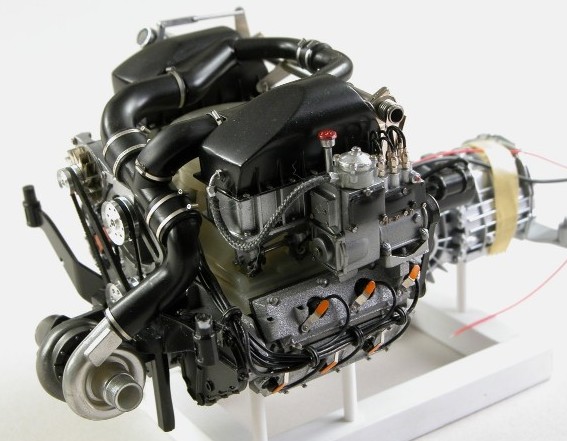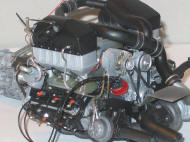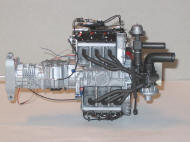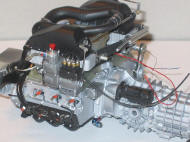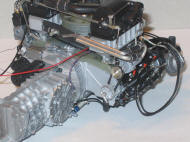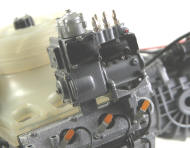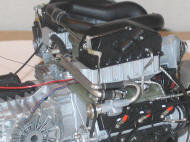|
Cars |
||||||||||
|
Reviewing the Porsche 935 big scale super kit for 1/12 Tamiya's kit from Scale Motorsport |
||||||||||
|
by Mario Covalski © 2004 |
||||||||||
|
Legal Notice No material from Modeler Site any Web site owned, operated, licensed, or controlled by Damian Covalski may be copied, reproduced, republished, uploaded, posted, transmitted, or distributed in any way, except that you may download one copy of the materials on any single computer for your personal, non-commercial home use only, provided you keep intact all copyright and other proprietary notices. Modification of the materials or use of the materials for any other purpose is a violation of Damian Covalski's copyright and other proprietary rights. Read More here > Legal notice
However, my long experience in constructing kits (going back to 1970) and my great familiarity with the Tamiya Porsche kits, enable me to give an opinion about the SMS set that may be of value to you. Before going on, I’d like to make some things clear to avoid potential misunderstandings. My first reaction, when hearing about the launch of this kit, and without seeing its scope or contents, was not too favourable, especially in view of its high price and complexity, or perhaps because I was not on very good terms with the manufacturer. Again, to clarify matters, my honest opinion of the set was pretty positive by the time I asked for such an expensive sample, otherwise I would have never had the bare faced cheek to make the request. However, I am totally clear that just because the sample was given to me for review, I did not feel obliged to write about the kit in glowing terms, if I really hadn’t thought that it was worth the praise. Reviewing the SMS set for the Porsche 935
Altogether the component count is around 1200 parts, which when added to the 500 parts in the standard kit (although some of them will be replaced), the potential can be seen to create from this combination a real museum piece.
I don’t want to overwhelm you by repeating the information you will already find in Scale Motorsport’s web site, so I’ll concentrate on letting let you know my impression about the set instead. Building a state-of-the-art museum piece As I have said before, I generally don’t trust the accuracy of kit reviews “from the box”. Short of being a fortune-teller, only someone who has actually built the kit in question would be able to put across in a review the time and effort invested in the project, with all its difficulties and quirks along the way…once it is safely tucked away in the display case. However, an opinion can be stated, and this will help the less experienced modeller to decide if what’s on offer is what he’s looking for, and what’s more, if he is capable of facing the challenge that this project brings. In spite of the fact that the turned parts, as well as the etched ones, are simply superb, they don’t look much at first sight, so we will have to analyze the instruction manual SMS provides to understand the qualities of this set, and what can be achieved with it. The booklet follows the construction steps in Tamiya’s 935 manual intelligently, showing us which of the kit parts should be replaced, which ones will be used, and the conversions or accessories added in this stage of the construction. The drawings shown in Tamiya’s instruction manual are also used in this booklet, in addition to the ones supplied by SMS. At first sight everything seems fairly straightforward. Some of the areas in the kit where the SMS set really excels, are:
Something that caught my attention as rather strange is the fact that some etched parts are provided with no instructions as to where they should be placed. The most notable of these are the inside rear windshield frames and the triangular side windows, the buckles for the seatbelts…etc. Whilst it is easy to be critical, in the interests of being constructive, there are one or two areas where improvements could have been made. For instance, a great deal of effort has been put into in developing high quality detailing parts, which are then added to translucent plastic parts such as the fluid reservoirs. Many of these are formed in two halves, leaving an unsightly join mark which is virtually impossible to remove. (For example, the oil catch tank in step 26, the two parts that surround the engine cooling fan, step 16 and others.) The brake calipers suffer a similar problem and could maybe benefit from improvement. The point is, with so much effort being placed on the set, at considerable cost, wouldn’t it have been an excellent idea to add to this set some replacement translucent resin parts? Possibly this could not be done due to copyright reasons, if so, fair enough, it’s justified. The rear wheels are not like the ones represented in the Tamiya kit, but they correspond to the pictures of the car on the reference CD. Searching through my library, it’s possible to find cars that ran in ‘76 and ‘77 with both type of wheels, nevertheless, as I said above, Tamiya chose not to model these wheels. Perhaps, I’m wrong and SMS have enquired about this and is very well-informed. I’ll check it out. Finally, I noticed that there aren’t specific parts to detail both the stabilizer bars, and the front suspension arms, but PE bolts are supplied, to give a degree of improvement in these areas. The Wiring Modelers are always eager to represent the tiny details, such as electrical wiring, throttle linkages, brake lines etc. The booklet with diagrams is a real gem, offering a complete wiring guide. However a sufficient amount is left to your imagination about exactly how to achieve this. It would have been fantastic to show the sub-assemblies already finished, with high-quality pictures, and how an experienced modeler accomplished those details by using the photos in the CD and the diagrams. Remember that we have the potential to produce a museum piece here.
Pictures by Paul Smith
A very positive point is that the SMS kit supplies two good decal sheets, of superb quality, to replace all those provided with the kit, but it would have been an outstanding plus point to include decals to represent a car from another team. At this point there were several others to choose from, and I don’t think it would have cost too much to provide at least one alternative choice. Finally, let me say that in this review we can only mention around 10% of this kit. It’s complete and excellent product, and actually manages to turn the tables, so that the Tamiya 935 becomes a detail set for the SMS kit! :-) . Is it worth buying this set? Well, here are my thoughts on the subject. Buying, is directly connected to people’s purchasing power, so, you have to do your own sums. Probably you’ll want to get hold of this top quality set, although you’re not necessarily planning to use it right now, and if SMS don’t reissue it, it’ll be an excellent investment. I really can’t say whether it’s cheap or expensive; during the last few years I’ve seen sets for Pocher 1/8th kits costing more than US$ 1000, which were already sold before coming onto the market, and kits in 1/43 that cost US$ 500, so what can I say?. Probably, this set will be seen as cheap to some people and expensive to others, but it’s a promising investment, so I don’t think that you’ll be throwing money away if you buy it. If you’re considering buying this set to detail a Porsche 935 just like that, forget it! This will be the most complex model you’ve ever built and a project you’ll take on only once. As the old Japanese proverb goes: “It’s a fool who doesn't climb the Mount Fují once in the life, but it’s a bigger fool who climbs it twice”. If you’ve read my August 2003 editorial “The best model of my life...”, I sincerely believe that this detail set for the Tamiya 935 will give you a pretty good chance to come close to that feeling. Perhaps, the climax of the discussion might be merely philosophical “Is it worth building such a detailed model? The answer is different for each of us, and is about what we expect from our spare time when building models. Conclusion This set is not recommended for beginners, to be bought to start construction the day after, absolutely not! SMS do not hide this fact. However, if you have plans to build something like this in future, nobody could be more surprised than you at seeing that this kit has already doubled its price, so take this into consideration. Sometimes, through ebay, I have purchased kits at higher prices than what I would have paid years ago, when they were generally available After studying this set very carefully, I liked everything. I would say that it largely fulfilled my expectations, and although there are a few weak points, the balance of opinion is in favour of SMS. We’ve discussed the cost issue in great detail, and as I’ve said many times over the years ago in other similar reviews, even if you decide to use only half of the parts supplied, the final result will be amazing. It leaves me to thank Mr. Mathew Wells from SMS for giving me the chance to analyze and publish a review of such a good set in Modeler Site, and, in spite of the fact that some people will probably object to this review, in the belief that the only way to produce a totally frank and unbiased review is when the reviewer has parted with his own hard-earned cash for the kit (which in the case of a kit this expensive, is a little absurd, as we’d only get opinions from millionaire modellers!). I’ve therefore tried to be as objective as possible in my analysis. The best way to sum up is to say I have no doubts that soon, we’ll see a Tamiya Con or other contest being won by a Tamiya 935 detailed with the SMS set. Is anyone out there building this kit? I invite you to send us an article! Support us ordering our notes in PDF > Here |
||||||||||

